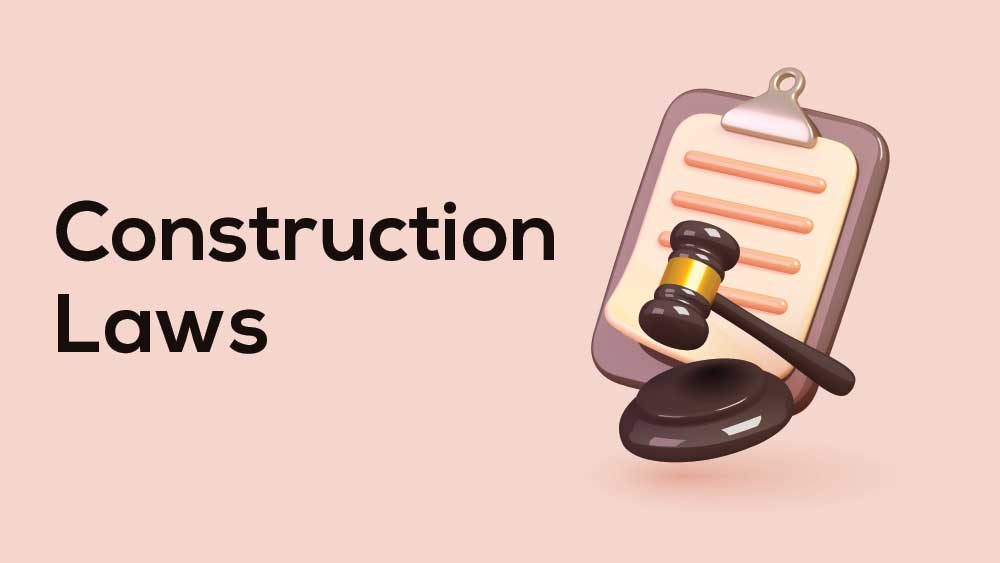The construction industry is a complex web of projects, contracts, and stakeholders, each intersecting and interacting in myriad ways. For this industry to function smoothly and fairly, a series of laws and regulations have been enacted to govern various aspects. Here, we delve into ten crucial laws that are pivotal in shaping the construction landscape.
The Occupational Safety and Health Act (OSHA) of 1970:
Ensuring worker safety is paramount, and OSHA is the primary federal law safeguarding workers in the construction industry. It mandates strict safety standards, requiring employers to provide safe working conditions free from known dangers.
The Davis-Bacon Act of 1931:
This act requires contractors and subcontractors working on federal government construction projects to pay their laborers at least the local prevailing wages and provide them with the local prevailing benefits. It helps ensure fair pay and prevents undercutting by contractors.
The Miller Act of 1935:
For any federal contract over $100,000, the Miller Act requires contractors to provide performance bonds and payment bonds. This guarantees the contractor will complete the project (performance bond) and will pay subcontractors, laborers, and suppliers (payment bond).
The Americans with Disabilities Act (ADA) of 1990:
Any public facility, including buildings and transportation, must be accessible to individuals with disabilities. The ADA sets standards for construction to ensure accessibility, affecting designs, specifications, and execution.
Construction and General Industry Fall Protection Standard:
Falls are the leading cause of death in construction. This OSHA standard mandates the conditions where fall protection is required and the types of fall protection accepted, aiming to prevent these tragic accidents.
The Contract Work Hours and Safety Standards Act (CWHSSA):
Applying to federal contracts, this act requires contractors and subcontractors to pay laborers and mechanics, including guards and watchmen, one and a half times their introductory pay rate for all hours worked over 40 in a workweek.
The Resource Conservation and Recovery Act (RCRA) of 1976:
Construction projects generate waste, some of which can be hazardous. The RCRA governs the disposal of such waste, ensuring it doesn’t harm the environment or public health.
The Clean Air Act (CAA) of 1963:
Construction machinery and equipment often produce emissions that can harm the environment. The CAA sets the standards for air quality and regulates air pollutants’ emissions, indirectly affecting the types and conditions of machinery used in construction.
The Federal Acquisition Regulation (FAR):
For construction professionals engaged in federal contracts, FAR is a primary guide. It contains uniform policies and procedures for acquisitions by executive agencies, ensuring consistency and transparency in the federal procurement process.
Lien Laws:
While specific regulations vary by state, almost every U.S. state has some form of a mechanic’s lien law. These laws protect contractors, ensuring they receive payment for services rendered. If a client refuses to pay, a contractor can place a lien on the property, hindering its sale or refinancing until the debt is settled.
An environment of fairness, safety, and responsibility
These laws collectively aim to create an environment of fairness, safety, and responsibility within the construction industry. Contractors, architects, and other stakeholders must deeply understand these regulations to ensure compliance, avoid litigation, and successfully navigate the construction landscape.
What was a legal case that greatly affected the construction industry?
One of the most significant legal cases affecting the construction industry is the United States v. Spearin case, often simply referred to as “The Spearin Doctrine.” It is a pivotal case because of its implications for construction contracts and the liability associated with design specifications.
United States v. Spearin, 248 U.S. 132 (1918)
Background:
In 1917, George Spearin entered into a contract with the U.S. government to build a dry dock in Brooklyn, New York. The government provided Spearin with the design specifications. During construction, a portion of the dike (which Spearin was not responsible for) failed, causing a delay. The government blamed Spearin for not taking precautions to avoid the failure and refused to compensate for the extra work. Spearin countered, stating that by providing the plans and specifications, the government had implicitly warranted their adequacy.
Decision:
The U.S. Supreme Court ruled in favor of Spearin. The Court held that when a contractor is bound to build according to plans and specifications provided by the owner, the contractor will not be responsible for the consequences of defects in those plans and specifications.Impact:
The Spearin Doctrine has had a lasting impact on construction law. It establishes that when an owner provides a contractor with specific plans, the owner is essentially providing an implied warranty that the plans are accurate, suitable, and free from defects. If there are issues due to these plans, the owner (not the contractor) is responsible, unless there’s a specific provision in the contract that states otherwise.
This case reinforced the importance of clarity in construction contracts and highlighted the risks owners undertake when providing detailed specifications. As a result, it has influenced how contracts are structured and has prompted owners and designers to be more cautious and thorough when drafting plans and specifications.




